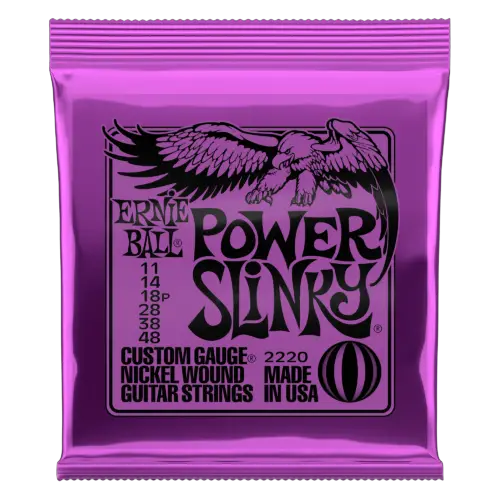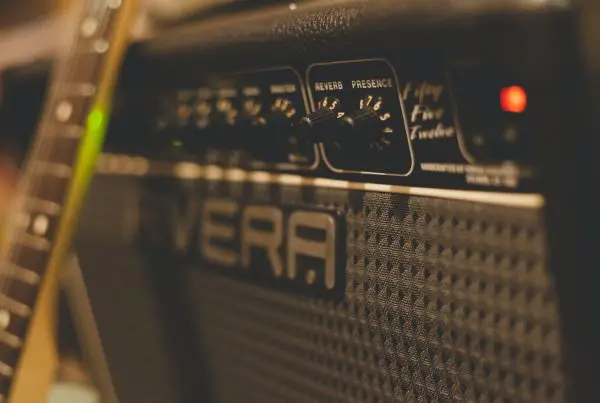To reduce fret buzz on low action setup, you can use various methods like going for higher gauge strings, adjusting neck relief or going for fret dressing.
It’s common knowledge that low action is good for speed but you cannot go too low because of fret buzz.
What’s not common knowledge is the fact that minor fret buzz is totally fine – when you actually play, the fret buzz won’t be noticeable. Many guitarists get too fixated on the minor fret buzz and unnecessarily stress themselves.
I know because I was one of these “stressed out” guitarists. But I have since learned that minor fret buzz is not a big deal at all!
In this article, I am going to cover more details regarding low action string and fret buzz with topics like below:
- 4 Tips To Getting Low Action Without Fret Buzz
- Why Does Low Action Cause Fret Buzz: Is It Normal?
- Is Small Fret Buzz Acceptable?
- Can You Have Low Action Without Any Fret Buzz?
- Low Action Vs High Action
- Conclusion
Also Read:
4 Tips To Getting Low Action Without Fret Buzz
1. Use higher gauge string
Higher gauge strings are thicker and have more tension – which means they are going to vibrate as much when you pluck. This helps in reducing fret buzz.
I recommend going for at least gauge 11 strings (or even higher, depending on your needs).
Most string packs are labeled using their thinnest string. 11 string pack means the thinnest string is 0.11 inches.
With thicker strings, you will have less fret buzz at low action. But it will be slightly harder to play. You need to apply more pressure when fretting and sliding.

11 String gauge
2. Adjust neck relief
To reduce fret buzz on low action strings, you need to have a neutral neck relief – not curved and not completely straight.
A professional should know exactly what you are talking about and can adjust the neck relief to reduce fret buzz.
Otherwise, you can also adjust yourself. Use an Allen key to turn the truss rod (see picture). Make sure to make your changes gradually – turn the key a little and see how much change is made, before proceeding further.
Accidentally bending your guitar neck too much can permanently damage it. But if done right, a neutral neck relief is the best way to remove fret buzz.
Here’s a YouTube video showing you how to adjust the neck relief on your guitar at home.
3. Go for fret dressing
Fret dressing evens out all your frets – which can significantly reduce fret buzz, especially on low action.
Uneven frets are usually the culprit for excessive buzzing. With fret dressing, you will have a luthier shave off all your frets into even heights and crown the frets for easier fretting.
Fret dressing can cost from $60 – $100 depending on the luthier. Though, I always recommend getting an experienced luthier who knows what they are doing.
It’s common to feel significant improvement on your guitars after a fret dress. I highly recommend you do it if you have been playing the guitar for 5 years without prior dressing.
Not only will you have less fret buzz, you will also improve your playing and tone.
Related article: Guitar Refret: When, How Often & How To Know (Is It Worth It)
4. Improve your fretting techniques
To reduce fret buzz on low action strings, you should play with less pressure and pluck (or strum) softly.
If you like to play hard and strum hard, then low action strings are probably not for you. Low action strings are prone to fret buzz – especially if you play it hard.
If you insist on using low action, then you have to learn how to play softer. I am sure you will get used to it within a few days – so nothing to worry here.
Why Does Low Action Cause Fret Buzz: Is It Normal?
Low action strings are prone to fret buzz because the strings are much closer to the fretboard and can come in contact with other (unintended) fret bars when you play.
Fret buzz is a normal thing on low action strings. Guitarists usually say that they like to go as low action as possible without causing any fret buzz.
If you have minor fret buzz and your action is low, then it’s very normal and you may have the perfect setup already.
It is impossible to achieve 0 fret buzz in a guitar – no matter how much changes you do to it. Let’s talk more about this topic next. Many guitarists are very curious about just how much fret buzz is acceptable – are you one of them?
Is Small Fret Buzz Acceptable?
Small fret buzz on low action strings are normal and should be acceptable. There is no such thing as 0 fret buzz on any guitars – so don’t even try to do it.
For electric guitar, you should test for fret buzz only when connected to the amp. You should realize that fret buzz is not noticeable when playing through the amp. Especially if you play with high gain and shredding.
For acoustic guitar, you should test for fret buzz by actually playing it. Don’t hold your guitar and pluck random frets – you are definitely going to cause fret buzz this way and this is not an accurate representation.
Low Action Vs High Action
Now that you know fret buzz will always be there for low action strings – now could be the right time to decide whether a low action or high action is suitable for you.
Low action strings have less travel – allowing you to fret and generally play faster. It’s also easier to perform tricks like hammer-ons or pull-offs.
However, a low action string is not suitable if you like to play hard and aggressive. Low action strings are prone to fret buzz – especially if you strum or pluck the strings hard.
Also, it’s harder to play bends and slides on low action strings because the travel is too little. You need to play slightly softer to accommodate.
On the other hand, high action strings have more travel – allowing you to play hard and aggressive without causing fret buzz.
You can perform slides and bends more accurately on high action strings because of the more travel between strings and the fretboard.
However, high action strings are harder to play. You need to press harder and you cannot play as fast because you need more travel time for each fret.
So after reading this, are you a low action or high action kinda guy?
Conclusion
Completely getting rid of fret buzz on a low action string is impossible. Instead, you should learn to play with it and get your technique right.
Most of the time, minor fret buzz is not even noticeable (especially if you are playing with an electric guitar on high gain). So, I suggest you don’t worry too much about it.
If you really have fret buzz problems, then look into adjusting the neck relief first. Make sure your neck is neutral (not too straight and not bowed). If that doesn’t work, then going for fret dressing is the second best option.





